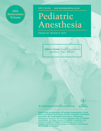Efficacy of palatal block for analgesia following palatoplasty in children with cleft palate
Summary
Background: This prospective randomized controlled study was undertaken to evaluate the efficacy of palatal block i.e. blocking of naso palatine, greater and also lesser palatine nerves in children with cleft palate undergoing palatoplasty by evaluating its effects on intraoperative anesthetic requirement, postoperative analgesia and parental satisfaction.
Methods: Forty-five pediatric patients aged below five undergoing cleft palate repair were randomly allocated to three groups of 15 each. After tracheal intubation, Group NB received no block for control, group S received 0.5 ml of normal saline and group B received 0.5 ml of 0.25% bupivacaine for palatal block. Postoperative pain score, the time to first demand of analgesia and number of rescue analgesic demands were noted. Finally, the parental satisfaction was graded.
Results: The block had no anesthetic sparing effect. The mean pain scores were significantly lower in patients who received block than in the group NB. The mean area under curve for FLACC score in group NB was 29 with 95% CI of 25–32, group S was 15 with 95% CI of 8.9–22.3 and in group B, it was 10 with 95% CI of 6–14. The time to first demand of analgesia was 6 [4.5–6] h in group NB, 18 [6–18] h in group S and 18 [18–18] h in group B (P-0.000). The number of demands of rescue analgesia was significantly less in group B 0 [0–0.25], 0 [0–2] in S group compared to group NB 3 [3–3] (P-0.000). The parental satisfaction was good in patients who received block and poor in group NB.
Conclusion: Palatal block is technically simple, safe and effectively provides postoperative analgesia with good parental satisfaction. Injection of saline also produced palatal nerve block; however, the effect was not consistent.




